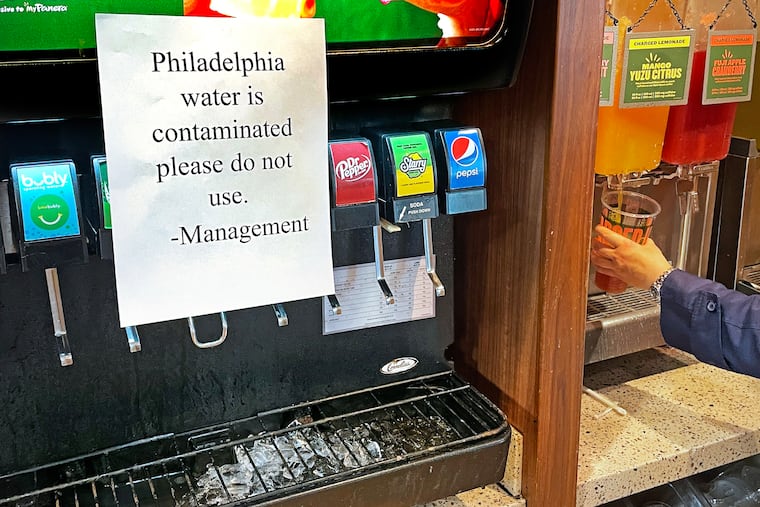Can we drink the water? Can we find the mayor? | Editorial
Showing up may seem like a minor part of a job that involves so many major decisions, but it is the part of the job that only a mayor can do. Leadership matters.

Who governs Philadelphia? Who do Philadelphians turn to in times of uncertainty, looking for a steady hand on the wheel? There should be an easy answer to those questions. Instead, Mayor Jim Kenney continues to leave the city adrift when he should be stepping up to lead.
When the nation’s sixth largest city — home to more than 1.5 million people — tells its residents they “may want to” switch to bottled water, that advice should not only be much clearer, it should come from its top elected official, not from the deputy managing director for transportation, infrastructure, and sustainability.
In place of the mayor, it was Mike Carroll and other city officials at the podium Sunday, explaining the situation to residents. After Bucks County chemical plant Trinseo spilled 8,000 gallons of latex finishing material into Otter Creek, a tributary of the Delaware River, Water Department officials became concerned that supply from the Baxter Water Treatment Plant, in Northeast Philadelphia, might become tainted.
The spill occurred Friday night, but the city did not alert the public until Sunday afternoon. A few hours after their vague warning about bottled water, they reassured residents that the taps were safe — for now. Throughout it all, Kenney himself was absent, although his staff told this board that he “is in Philadelphia and has been in the city” for the crisis.
Sadly, “woodergate” is hardly the first time the mayor has been missing in action. Kenney’s refusal to lead on public safety moved City Council to do its own research, placing the creation of a public safety director on the ballot against the mayor’s wishes.
Kenney has also taken a back seat on big issues such as the Sixers’ arena proposal, amplifying disagreement between developers and residents instead of forging solutions. Last summer, after two police officers were shot, he infamously told reporters, “I’ll be happy when I’m not here, when I’m not mayor” and can instead enjoy “wonderful” places like Madrid, where he can “walk around at 1 o’clock” worry-free.
While Philadelphians may not have been surprised by the mayor’s conspicuous absence, they were still disappointed. (His office has countered that, at least this time, he managed to tweet about the situation.) Whatever their flaws, Mayors Michael Nutter, John Street, and Ed Rendell would have been talking to residents directly about the potential contamination and what the city was doing about it. It would have been their familiar faces we’d have seen at the podium.
From Kenney himself, we got only tweets.
Why? What was the mayor doing that could possibly have been more important, that kept him from addressing the public on Sunday afternoon and evening?
Showing up may seem like a minor part of a job that involves so many major decisions that affect people’s lives and livelihoods, but it is the part of the job that only a mayor can do. Leadership matters. In a city teeming with nervous energy even on our best days, confusing communications are more likely to instill panic than provide usable information — and instill panic is what they did.
In scenes reminiscent of the early days of the pandemic, grocery store shelves stood empty Sunday as people rushed to buy as much bottled water as they could. Even in areas not expected to be affected by the spill, fears abounded.
Despite the city’s later reassurances that tap water everywhere remained safe to drink, the damage was already done. Instead of filling up containers with safe tap water to prepare for the possibility of contamination later this week, many residents were left confused and wondering what to do.
On Monday evening, more than a full day after Carroll spoke, the mayor finally faced the public. Kenney insisted that he spent the weekend in the city, although he didn’t say why he skipped the Sunday news conference.
According to officials, no contamination has been found, with Carroll saying it was very likely that the city’s supply will never be affected. The chemicals should clear the city before the end of the week.
Sadly, we’re stuck with Kenney for a little while longer.